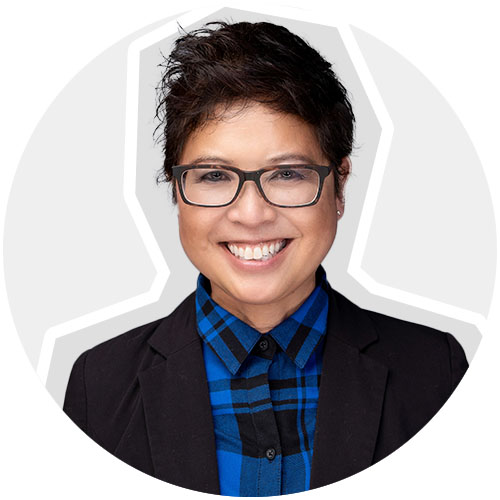

April Williamson, Project Director, Global Programs
Several conference sessions focused on the “I” in ISTE (International Society for Technology in Education), highlighting global collaboration, educational technology across borders, and the use of open education resources (OERs) to empower students for global impact. A recurring theme from these sessions was the abundance of promising ideas, tools, and free resources available worldwide, with artificial intelligence (AI) expected to accelerate content development. However, a critical challenge remains: how can educators worldwide discover and evaluate these resources without attending conferences like ISTELive?The solution lies not in creating more content, but in developing robust systems to connect educators with the highest-quality and most relevant resources and supporting their integration into diverse educational settings.

Starian Porchia, Project Director, Community Networks
Despite the overwhelming pressure to learn and implement all things AI, there was a strong undercurrent throughout the conference around ways to keep an emphasis on human interactions and connections when it comes to these emerging technologies. I noticed this in the types of recurring conversations I had with educators and leaders during and after sessions. People aren’t just looking to learn something new; they want to meet new people who can expose them to things they won’t find in their geographic community. The goal is human connection, and the learning sessions are just a conduit.

Diane Doersch, Senior Director of Information Technology
I attended many sessions on edtech leadership, including ones which focused on generative AI readiness and cybersecurity. As the chair of CoSN (the Consortium for School Networking), I was honored to introduce the CoSN Chief Technology Officer (CTO) Forum alongside Richard Culatta, CEO of ISTE. In that session, CTOs shared best practices and resources relevant to their work. We had a lively discussion about expanding existing policies to encompass the ethical use of generative AI and new technologies of the future. My time at ISTE and working with CTOs validated that from the classroom to the boardroom, there is collective agreement around empowering our teachers and students with the help of technology. However, we must work collectively to provide guardrails and incorporate and share best practices so that nobody is left behind.

Nick Schiner, Director, Peer-to-Peer Professional Learning
As an avid gamer and advocate for playful learning, I was thrilled to see the growing presence of gaming and play as part of the ISTE experience and something that educators and decision-makers are taking seriously. Sessions throughout the conference touted and proved the efficacy of scholastic esports for social-emotional and STEM learning. I had the honor of presenting a session alongside my colleague Kelly McNeil, learning experience designer, using tabletop and roleplaying gaming (TTRPG) elements to teach educators about playful professional learning. Throughout the conference, I had the chance to connect with many of the folks who attended our recent Edcamp XP professional learning and networking event, and I cannot wait to continue the work of building community and connecting educators at the intersection of learning and play.

Alison Shell, Senior Research Scientist
A few discussions dug into the role of research in edtech across multiple perspectives. We spoke with educators and education leaders about what types of evidence they want when considering their edtech choices, and it became clear that there is a serious communication divide between educators and researchers. Educators noted that while they do want evidence that the tools will work, the story more or less ends there. They don’t typically have time to dig into details, though they do prefer research that comes from a third party. In another group of mostly researchers, we discussed this clear communication gap and a need for researchers to better listen to the needs of educators in designing research questions and reporting on evidence. It supported a role for co-design and elevated the value that evidence-based badging can bring in bridging this divide.
Do you want to stay in the know on the latest insights and perspectives from Digital Promise? Follow us on X and LinkedIn and sign up for the bi-weekly Action Report newsletter.